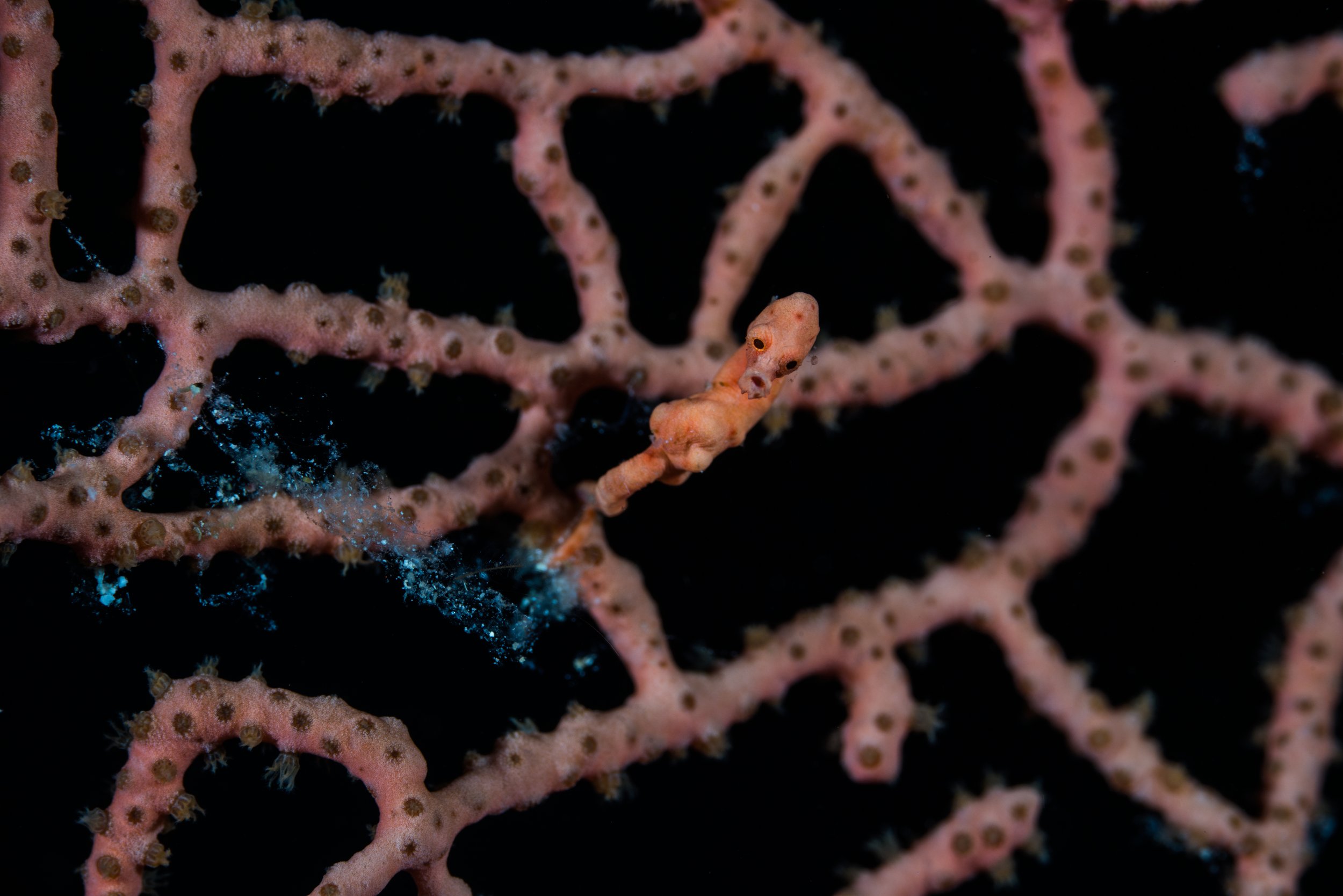Dive Site Highlight: Crystal Bay
You’d be hard pressed to find a list of Bali’s “Top Dive Sites” that doesn’t include Crystal Bay. Located on the northwest side of the island, Crystal Bay is the most frequented dive site in the channel between Nusa Ceningan and Nusa Penida. Like many of the sites around the Nusa Islands, Crystal Bay has the potential to subject divers to strong currents and thermoclines, but is perfectly safe for new divers under appropriate supervision.
Famous for frequent bumphead sunfish (Mola alexandrini) sightings during the July-October upwelling season, the site attracts thousands of divers each year. Sunfish rely on the sun for thermoregulation and are thus diurnal predators. They spend the day-time alternating between diving to depths of over 600 m to hunt jellyfish and siphonophores and returning to the surface to sunbathe and reheat their muscles and their evenings resting and scavenging in shallower, warmer waters. The upwelling that takes place around the Nusa Islands during the July-October period means that the sunfish don’t have to dive as deep to feed and spend more time between 20-40 m, significantly increasing our chances of seeing them during our dives.
Whilst the chances of seeing a bumphead sunfish are lower during the off-season, Crystal Bay also offers an incredible variety of macro-encounters along its sandy benthos and sloping coral reef walls that make it a bucket list spot for any diver visiting the Nusa Islands. Whether you’re into seahorses, nudibranchs, mantis shrimp, flounders, sea moths, scorpionfish, turtles, moray eels, frogfish, sea kraits (snakes), or wobbegong carpet sharks, Crystal Bay has something for you! Most dives start from the bay’s shallow, sandy mooring area and move out west towards a valley between two sloping reef walls. As the valley begins to slope off around 8 m, it’s a great time to keep your eyes peeled for the bay’s resident common and pygmy seahorses (Hippocampus taeniopterus and Hippocampus bargibanti, respectively). They’re often found clinging to the little tufts of vegetation spread out across the sand.
During the upwelling season divers normally head out along the northern slope in the hopes of spotting a bumphead sunfish enjoying the reef’s various cleaner fish. Whether or not you see a sunfish, the reef slope is a great spot to look for macro-life, green and hawksbill turtles (Chelonia mydas and Eretmochelys imbricata, respectively), banded sea kraits (Laticauda colubrina) and the elusive spotted and tasselled wobbegongs (Orectolobus maculatus and Eucrossorhinus dasypogon, respectively) as you make your way back towards the interior of the bay.
Divers then have the choice to enjoy the north reef or head out across the valley to the southern slope, where they might be lucky enough to come across giant and warty frogfish (Antennarius commerson and Antennarius maculatus, respectively), leaf scorpionfish (Taenianotus triacanthus), dragon sea moths (Eurypegasus draconis), and schools of juvenile great barracuda (Sphyraena barracuda). Both sides of the reef slope are teeming with a multitude of nudibranchs from the chromodoris and phyllidia genera for the sea slug enthusiasts amongst us.
Dives usually conclude back in the shallow mooring area, where it’s always a good idea to deploy a surface marker buoy (SMB) to get your boat’s attention and warn other boats that you’re getting ready to surface. Let us know if we missed any noteworthy attractions that Crystal Bay has to offer!
Photos by British Underwater Photographer of the year Ollie Clarke





